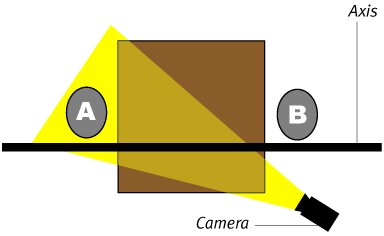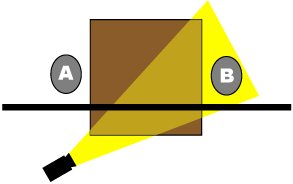Composing Your Shots
| If you really want to, you can hold the camcorder up in the air and hit recordwith your eyes closed. But by putting a small amount of thought into the composition of your shots, you can give them a much more professional look. Shoot largeI had the opportunity to see a 70mm print of Lawrence of Arabia a few years ago on the massive screen at Seattle's Cinerama theater. The movie is filled with sweeping desert vistas where you can see miles in every direction, taking full advantage of a large-screen experience. Most likely, your video will instead play on a television screen or as a QuickTime movie on a Web page (Figure 2.5). For that reason, try to "shoot large"make sure the subject is large enough in the frame that it's instantly recognizable even on a small screen. Getting closer also reveals more detail than can be seen from a distance. Figure 2.5. Sweeping vistas don't always work in small movie windows, so try to shoot large when you can. Don't abandon wide shots, however. Tape is relatively cheap, so grab the shot when it's available; you can intercut the wider shots later when you're editing in iMovie. See "Coverage" later in this chapter. Maintain an axisMost people are fluent enough in the language of film that they aren't thrown by sudden cuts or changes in a scene. But visually crossing an axis tends to freak them out. The idea is this: if you have two people in a scene, and you're switching between close-ups of each one, they should both remain on their own sides of the screen (Figure 2.6). If character A is on the left side of the table, but then you move the camera so that he appears on the right side of the screen, the viewer is left wondering how he moved so quickly. At the very least, she'll notice that something odd has happened, which distracts her from the movie's content. Figure 2.6. Keeping the camera on the same side of your axis line helps the viewer maintain a mental geography of the scene.Shooting Person A Shooting Person B Balance your shotsAs I look through still photos I've taken over the years, I notice an annoying consistency: everything is centered. People, monuments, sunsetsall evenly positioned between the edges of the frame. Perhaps it's just our nature to center objects, but it's a good habit to break. Go watch television or a movie and you'll see that almost nothing is centered. Positioning elements slightly askew of center makes them more interesting. Another take on this positioning is called the rule of thirds: the focus of your composition should appear one third of the way from the edge of the frame (Figure 2.7). Also make sure that the subject is facing into the frame, not toward the outside (Figure 2.8). Figure 2.7. The train's engine appears in the first third vertical portion of this shot. Figure 2.8. When your subject faces toward the middle of the frame, he remains engaged with the rest of the shot, rather than looking outside the frame at something else (which is then where your viewers will want to look). Tips
|
EAN: 2147483647
Pages: 197




